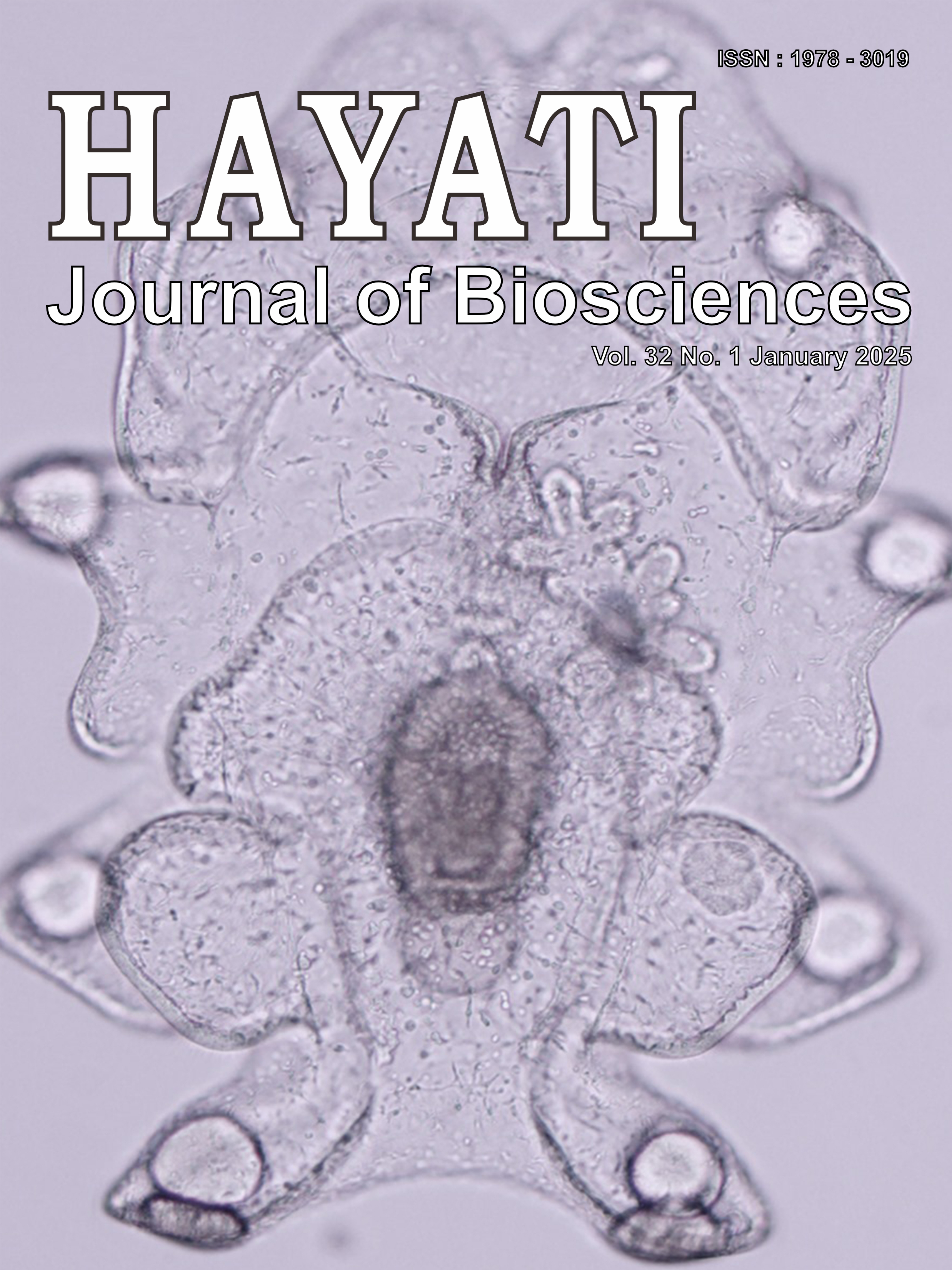The Survival, Growth, and Accelerating Morphological Development of Stichopus horrens are Affected by the Initial Larval Stocking Densities
Abstract
Stichopus horrens is highly exploited due to their use as a pharmaceutical ingredient. Since then, this species has become extinct; therefore, it is necessary to start aquaculture. Gonad maturation and broodstock spawning succeeded, but the optimum larval-rearing stocking density has not yet been determined. Therefore, the present study aimed to determine the optimal stocking density to improve survival and accelerate the development of larval morphology. Three treatments were used: 100, 150, and 200 larvae L-1, each with four replicates. Twelve 100-litre plastic containers filled with 80 litres of seawater as larval rearing media were placed in a concrete tank with a water-bath system using a heater and a thermostat (29.0°C±1.0°C). The larvae were fed a mixture of microalgae (Chaetoceros muelleri, Isochrysis galbana, and Nitzchia sp.) twice a day-1. The data collected included survival and growth rates, larval morphological development, and water quality. The fastest metamorphose from auricularia to the doliolaria stage occurred in 100 larvae L-1, 15 days after hatching. The highest survival rate, growth rate, and percentage of larvae metamorphose to the doliolaria stage were obtained in the 100 larvae L-1 as 26.38%, 26.4 µm day-1, and 65.27%, respectively, and were significantly different (P<0.05). A stocking density of 100 larvae L-1 was optimal for promoting survival and growth and accelerating the morphological development of auricularia to the doliolaria stage.
Downloads
Copyright (c) 2025 Sari Budi Moria Sembiring, Ketut Maha Setiawati, Zeny Widiastuti, Jhon Harianto Hutapea, Gunawan Gunawan, Ananto Setiadi, Haryanti, Nyoman Adi Asmara Giri

This work is licensed under a Creative Commons Attribution-NonCommercial 4.0 International License.
HAYATI J Biosci is an open access journal and the article's license is CC-BY-NC. This license lets others distribute, remix, tweak, and build upon author's work, as long as they credit the original creation. Authors retain copyright and grant the journal/publisher non exclusive publishing rights with the work simultaneously licensed under a https://creativecommons.org/

























.png) IPB University
IPB University Department of Biology
Department of Biology The Indonesian Biological Society
The Indonesian Biological Society 

